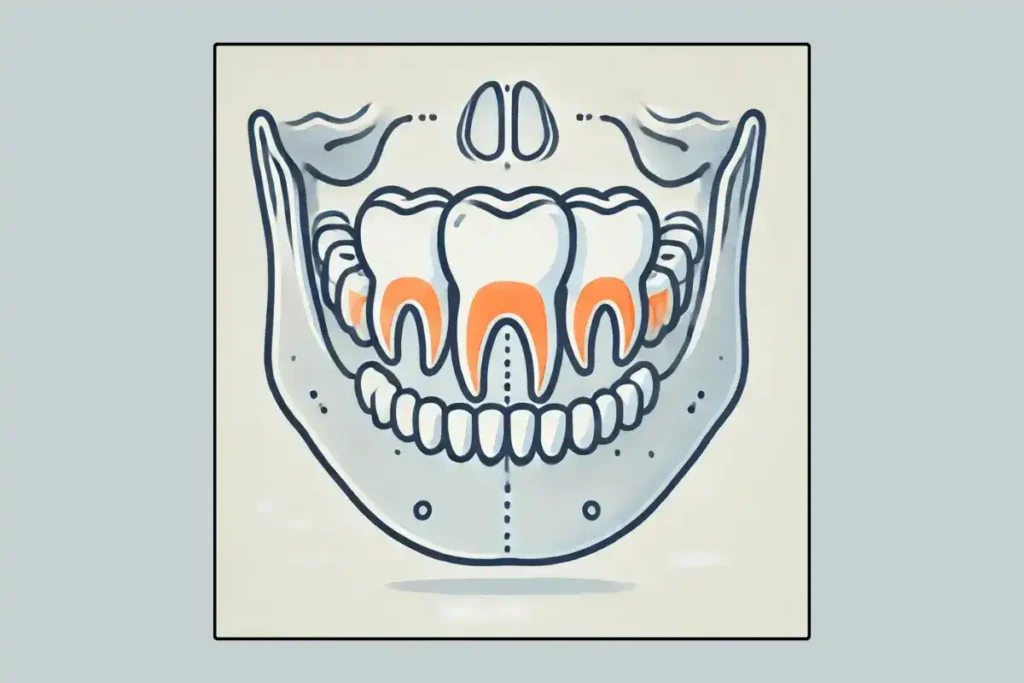Just had your wisdom teeth yanked out and desperately missing your morning coffee? Now you are thinking about can you drink coffee after wisdom teeth removal. I feel your pain. That first cup of coffee feels miles away when nursing a swollen jaw and following a strict recovery diet. But here’s the good news – you won’t have to break up with coffee forever. While you must show patience during healing, there’s a clear timeline for reuniting with your beloved brew. Let’s explore exactly when and how you can safely return to coffee after wisdom teeth removal.
Why Wisdom Teeth Recovery Hits Different

Your mouth just went through quite an adventure. Unlike a can I drink coffee after tooth extraction, wisdom teeth removal involves deeper surgery. Those stubborn third molars often need extra coaxing to come out, leaving behind sensitive extraction sites that require special care. This means your coffee routine needs a thoughtful pause to prevent complications like the dreaded dry socket.
Can you drink coffee after wisdom teeth removal?
The First Two Days – When Coffee Feels Like Forever
Those initial 48 hours are crucial for healing. Your mouth is still getting over the anesthesia, and those important blood clots are starting to form. Even if you’re feeling surprisingly good and craving that caffeine kick, this is when patience becomes your best friend. Hot, cold, or iced – all forms of coffee need to stay off your menu right now. Your future self will thank you for this temporary sacrifice.
Understanding Post-Surgery Risks: Temperature, Dry Socket, and Warning Signs
Let’s discuss the critical connection between your coffee habits and post-surgery complications. Everyone’s biggest fear after wisdom teeth removal is developing a dry socket – and your morning coffee ritual could be a direct ticket to this painful condition.

Hot beverages pose a triple threat to your healing:
- They can wash away protective blood clots
- Extreme temperatures shock sensitive nerve endings
- Even room-temperature drinks might introduce harmful bacteria
- But temperature isn’t your only concern. Stay alert for these recovery red flags:
- Delayed healing around surgical sites
- Unexpected suture loosening
- Signs of infection or inflammation
- Medication side effects
- Persistent swelling beyond normal timeline
Finding the right temperature balance is crucial. While hot coffee can dissolve those precious blood clots, very cold drinks can be equally problematic, shocking your sensitive nerve endings. The sweet spot? Lukewarm beverages at room temperature once your dentist gives the green light.
Recommended Placement: Add this section right after “The First Two Days – When Coffee Feels Like Forever” and before “Days 3-5: Dipping Your Toe Back In”. This placement works because:
1. It follows naturally after introducing the initial healing period
2. It explains why the temperature and timing guidelines matter
3. It establishes the reader’s understanding of the following recovery timeline.
Your Coffee Comeback Timeline: Days 3-14
The healing journey gets easier as days pass. Starting day three, your mouth begins feeling more familiar, though you’ll need to approach coffee cautiously. Here’s how to gradually reunite with your favorite brew:
Days 3-5: First Sips
Some dentists might give you the green light for careful coffee consumption. If approved:
- Stick to room-temperature coffee
- Dilute it to be gentler on healing sites
- Avoid straws completely – they can disturb healing
- Take small sips and monitor how you feel
Days 5-14: Warming Up
Around day five, you can start getting a bit more adventurous – but keep things moderate:
- Try slightly warm (not hot) coffee
- Choose mild brews over strong ones
- Listen to your body’s signals
- Back off if you feel any pain or throbbing
Getting Back to Normal: Your Recovery Milestones
The journey back to your regular coffee routine is a gradual process. While everyone heals differently, there are clear signals that show when you’re ready for each step:

Early Recovery (Days 1-3):
- Focus on healing and blood clot formation
- Stick to water and prescribed medications
- Monitor for proper healing signs
Moving Forward (Days 4-14):
- Start with room-temperature coffee when approved
- Gradually increase the temperature as comfort allows
- Take it slow and steady with each new step
Signs You’re Ready for Regular Coffee:
- Complete jaw mobility without any pain
- No sensitivity when eating warm foods
- Healed gum tissue around extraction sites
- Return to normal eating habits
- No discomfort with lukewarm beverages
Navigating Your Coffee-Free Recovery: Smart Alternatives and Warning Signs
Missing your daily coffee fix? While patience is key, there are ways to cope with caffeine cravings safely. Here’s how to handle the coffee-free days and know when to exercise extra caution:
Safe Alternatives During Recovery:
- Room-temperature herbal teas for a comforting warm drink
- Coffee-flavored protein drinks (no straws!)
- Diluted cold brew (only after day 3)
- Lukewarm beverages that won’t disrupt healing
If you’re watching your macros while recovering, you might wonder does coffee have carbs. You can also consider adding creatine to your coffee once you’re cleared for regular consumption.
Listen to Your Body’s Signals:
If any of these warning signs appear after trying coffee, it’s time to pause and consult your oral surgeon:
- Unexpected pain or discomfort
- Increased bleeding
- Strange tastes in your mouth
- Changes in healing progress
The Two-Week Mark: Hello, Old Friend
Two weeks in, most people can return to their regular coffee habits. But remember – healing is personal. If your mouth still signals you to take it easy, listen up. There’s no race to the coffee pot here.
Beyond the Basics: Why Wisdom Teeth Are Different
Getting your wisdom teeth removed isn’t just another tooth extraction. Let’s dive deeper into why your coffee timeline matters even more here.
Age and Recovery: Why Timing Matters
Did you know your age affects how quickly you can return to coffee? Younger patients (late teens to early 20s) typically heal faster, while those getting wisdom teeth removed later might need extra recovery time. Your bone density and healing capacity change with age, directly impacting when you can safely enjoy that first cup of coffee. If you’re over 25, you should add an extra day or two to each recovery phase.
The Recovery Journey: More Than Just Healing
While counting down the days to your next coffee fix, more is happening in your mouth than you might realize.
From Sedation to Sipping: The Post-Anesthesia Journey
That fuzzy post-surgery feeling isn’t just from missing teeth. If you’ve had general anesthesia or deep sedation, your body needs time to clear these medications. Adding coffee too soon can trigger nausea or interact with your pain medications. Some pain meds intensify coffee’s effects, while others make it less effective. Wait until you’re fully alert and done with the strongest pain medications before attempting even room-temperature coffee.
Once the anesthesia fog clears, you’ve got another challenge to tackle.
Managing Multiple Extraction Sites
Wisdom teeth removal leaves you with up to four healing sites, unlike a single tooth extraction. Each one needs protection. When you finally start drinking coffee again, those back-of-mouth locations make it tricky to keep the liquid away from your healing sites. Pro tip: when you’re cleared for lukewarm coffee, try using a spoon to direct the liquid toward the front of your mouth, avoiding those sensitive surgical areas.
Navigating Sutures and Stitches
Have you got stitches? Your coffee timeline might need adjusting. Dissolvable sutures typically start breaking down around day 7-10, and hot beverages can speed up this process too quickly. Stick to room-temperature drinks until your oral surgeon confirms your stitches have properly dissolved or been removed. This helps maintain the stability of your sutures and protects your healing gum tissue.
Understanding Your Specific Case
Every wisdom tooth extraction is unique, and knowing your situation helps you make smarter decisions about when to return to coffee.
Understanding Wisdom Teeth Complexity Levels
Getting your wisdom teeth removed isn’t a one-size-fits-all procedure. Your specific case affects both the surgery complexity and your coffee comeback timeline:
Level 1: Erupted Wisdom Teeth
Your teeth have fully emerged, making removal straightforward. The surgery is simpler, with minimal incisions and faster healing. While you might return to coffee sooner, you must follow basic healing guidelines to protect your extraction sites.
Level 2: Partially Impacted
These stubborn molars are partially stuck under your gum tissue, requiring more intensive surgery. Expect more sutures and deeper incisions, making your extraction sites particularly vulnerable to hot liquids and coffee’s natural acids. Extra caution with beverages is crucial for proper healing.
Level 3: Fully Impacted
The most complex scenario is wisdom teeth trapped under your gums or growing at odd angles deep in your jawbone. This extensive surgery means longer healing time, more sutures, and deeper incisions. Your coffee reunion might need to wait two weeks, as these back-of-mouth surgical sites need extra protection from temperature and acidity.
Remember, healing time varies by complexity level, age, and overall health. Your oral surgeon will provide specific guidelines based on your unique case.
Location Matters: Back-of-Mouth Challenges
Wisdom teeth occupy that tricky far-back position in your mouth. This creates unique challenges for drinking coffee:
- Liquid naturally pools in this area
- Temperature sensitivity is higher
- Harder to keep clean after drinking
- More difficult to avoid contact while sipping
Special drinking techniques, like using the front of your mouth, become crucial during recovery.
Modern Surgery and Recovery
Today’s wisdom teeth removal techniques can affect how quickly you return to your favorite brew.
The Impact of Modern Surgical Techniques
Today’s wisdom teeth removal often uses advanced tools and techniques that can affect your recovery:
- Laser surgery might allow earlier coffee consumption
- Platelet-rich plasma treatment could speed healing
- Minimally invasive techniques might reduce restrictions
- Computer-guided surgery can mean more precise healing timelines
Always check with your surgeon about how your procedure affects your coffee timeline.
The Road Back to Your Morning Brew
Returning to your coffee routine after wisdom teeth surgery is a journey, not a race. Your healing timeline is unique, so pay attention to what your mouth tells you. Trust the process, follow your surgeon’s guidance, and soon enough, you’ll enjoy your favorite coffee exactly how you like it. The wait might feel long, but protecting your recovery is worth every coffee-free minute.
Craving Control: Smart Alternatives to Your Coffee Fix
The waiting game feels tough, but don’t worry – you’ve got options. Think of this as a chance to explore new morning rituals. A room-temperature matcha latte packs a gentle caffeine punch without irritating those tender spots. Or try a coffee-flavoured smoothie bowl (eaten with a spoon, not a straw) to fool your taste buds while staying safe.
The Caffeine Connection to Healing
Most people don’t realize that caffeine actually affects how your mouth heals. It can expand your blood vessels, potentially increasing bleeding and slowing down clot formation. That’s why even cold brew coffee needs to wait its turn despite being less acidic than its hot cousin.
Your Day-by-Day Recovery Guide
The path back to coffee drinking isn’t a mystery. Your first sip of room-temperature coffee around day three might not taste like your usual brew, but it’s a start. You’ll likely return to your regular coffee temperature by week two, taking things slow and steady.
Making Peace with Modified Coffee
Think of this as a chance to experiment. Mix some cold milk with room-temperature coffee for a gentle hybrid drink. If you’re interested in preparing the perfect cup once you’re healed, learn how to roast coffee beans for the freshest taste. Our taste buds might even discover some new favorites along the way.
For coffee lovers who enjoy milk-based drinks, try a breve coffee once you’re fully healed. It cools your coffee and makes it gentler on your healing socket.
When to Trust Your Gut
Your body knows best. If something feels off when you start drinking coffee again, that’s your cue to slow down. A few extra days of caution beats weeks of complications from rushing back too soon.
Moving Forward: Your Coffee Future
Before you know it, this whole wisdom teeth saga will be behind you. Your morning coffee routine will feel normal again, even with some new twists you discovered during recovery. The key is respecting your body’s healing process now so you can enjoy countless perfect cups in the future.
Remember – every smile is unique, and so is every recovery journey. Please work with your timeline, not against it. Your favorite coffee spot isn’t going anywhere, nor is your love for a good brew. Focus on healing first; reunion with your beloved coffee will be even sweeter when the time is right.
The Hidden Risks in Your Coffee Cup
It’s not just about temperature and caffeine. Your favorite coffee drinks might pack some surprising healing hurdles. Those fancy-flavored syrups? They’re acidic. That sprinkle of cinnamon? It could irritate your wounds. Even your regular black coffee’s natural acids might slow down healing. Knowledge is power – and knowing these risks helps you make smarter choices during recovery.
Working With Your Dentist’s Timeline
Your dentist knows your specific case best. Your wisdom teeth may have been impacted, requiring more extensive surgery. Or perhaps they came out easily with minimal trauma. These factors affect when you can safely return to coffee. Being honest with your dental team about your coffee habits helps them give you the most accurate timeline for your situation.
Signs You’re Ready for Regular Coffee Again
Your body sends clear signals when it is ready to handle hot coffee again. Watch for:
- Complete jaw mobility without pain
- No sensitivity to warm foods
- Healed gum tissue around extraction sites
- Normal eating habits resumed
Making the Most of Your Recovery Period
Think of this break from coffee as a reset button. Use this time to explore new morning routines. You may discover that mid-morning decaf isn’t so bad. Or find that green tea gives you just enough energy without the jitters. Your coffee palate might even thank you for the brief vacation.
Long-Term Success After Surgery
The choices you make during recovery affect more than just your coffee schedule. Following post-surgery care instructions carefully, including coffee restrictions, helps ensure your mouth heals properly. This means fewer complications and a quicker return to your normal routine.
Remember, this temporary pause in your coffee routine is just that – temporary. Taking care of your mouth now means many more years of enjoying your favorite drinks exactly how you like them. Your future self will thank you for your patience during these few weeks of healing.
Frequently Asked Questions About Coffee After Wisdom Teeth Removal
Can I drink iced coffee with a straw after wisdom teeth removal?
No, you should avoid using straws for at least a week after surgery, even with iced coffee. The suction created by straws can dislodge blood clots and cause dry sockets. Once your surgeon gives the okay (usually after 7-10 days), you can gradually reintroduce straw use with cold beverages.
Will decaf coffee affect my recovery differently than regular coffee?
While decaf coffee has less caffeine, it still poses similar risks to regular coffee. Both contain acids and can be irritating to extraction sites. The main concerns are the temperature and acidity, not just the caffeine content. Follow the same timeline for decaf as you would for regular coffee.
Can I brush my teeth after drinking coffee during recovery?
Once you start drinking coffee again (after days 3-5), wait at least 30 minutes before gentle brushing. Avoid brushing directly around extraction sites, and use lukewarm water for rinsing. If your surgeon provided a special mouth rinse, use that instead of regular brushing near surgical sites.
Is adding milk or creamer to my coffee safe during recovery?
Adding cold milk or creamer is beneficial when you’re cleared to drink room-temperature coffee (usually after day 3). It helps further cool the coffee and can make it less acidic. However, avoid sweetened creamers and flavoured syrups in the first week, as they irritate healing sites.
How does smoking cigarettes affect the coffee-drinking timeline after wisdom teeth removal?
Smoking significantly complicates recovery and extends the waiting period for hot beverages like coffee. If you smoke, you should wait at least an additional 72 hours beyond the standard timeline before introducing any coffee. Ideally, avoid smoking entirely for at least a week post-surgery to prevent complications.
What happens if I accidentally drink hot coffee too soon after surgery?
If you accidentally drink hot coffee before it is recommended, don’t panic. Rinse your mouth gently with cool salt water (if past the first 24 hours). Monitor for increased pain, bleeding, or signs of dry socket. Contact your oral surgeon if you notice any concerning symptoms like severe pain or fever.
